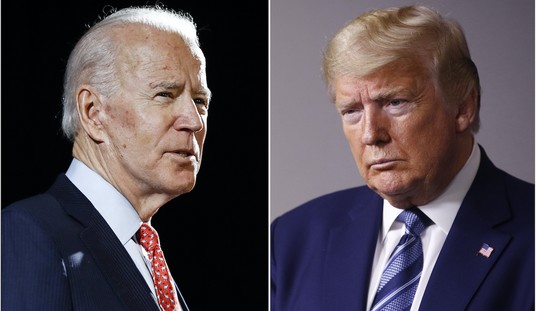After a new study found that three percent of a sample of Minnesota high school students identified as being either transgender or “gender nonconforming,” left-leaning media outlets spread the news far and wide. Reports from the Associated Press, CNN, and CBS all clearly relished such a transformation in American social and cultural life. However, in their zeal, journalists ended up overhyping the study's conclusions, sometimes getting basic facts wrong about the scientific evidence that they purported to inform their readers about.
The AP story, which set the template for most media coverage of the Minnesota study, went as follows (note the complete acceptance of transgender dogma and terminology throughout, in addition to the lack of substantive counterpoints to the study's claims) [emphasis mine]:
Far more U.S. teens than previously thought are transgender or identify themselves using other nontraditional gender terms, with many rejecting the idea that girl and boy are the only options, new research suggests.
The study looked at students in ninth and 11th grade and estimated that nearly 3 percent are transgender or gender nonconforming, meaning they don’t always self-identify as the sex they were assigned at birth. That includes kids who refer to themselves using neutral pronouns like “them” instead of “he” or “she.”
“Diverse gender identities are more prevalent than people would expect,” said lead author Nic Rider, a University of Minnesota postdoctoral fellow who studies transgender health.
The study is an analysis of a 2016 statewide survey of almost 81,000 Minnesota teens.
Nearly 2,200 identified as transgender or gender nonconforming. The study found that these kids reported worse mental and physical health than other kids, echoing results seen in previous research. Bullying and discrimination are among possible reasons for the differences, Rider said, although the survey didn’t ask.
Rider said it’s a study based on a statewide population of teens in ninth and 11th grades and that the results can be used to estimate numbers of trans and gender nonconforming teens in those grades across the United States.
The study was published Monday in Pediatrics.
Although the study only included teens in two grades, the rates are higher than a UCLA study released last year estimating that 0.7 percent of teens aged 13 to 17 are transgender, or about 150,000 kids. That study used government data on adults to estimate numbers for children. It said 0.6 percent of U.S. adults identify as transgender, or about 1.4 million.
Some experts believe rising awareness of transgender issues has led increasing numbers of transgender teens to come out, or to experiment with gender identification.
“With growing trans visibility in the United States, some youth might find it safer to come out and talk about gender exploration,” Rider said.
But differences in estimates may also reflect differences in how gender identity questions are phrased, Rider said.
The federal Centers for Disease Control and Prevention has not asked about transgender status on its youth surveys, noting that it is difficult to find the right question to yield a credible answer.
The survey Rider analyzed asked about the sex the teens were assigned at birth, and if they considered themselves transgender, gender queer, gender fluid or unsure about their gender identity. Kids were not asked if they had undergone surgery or other medical treatment to transition to the opposite sex.
Dr. Daniel Shumer, a specialist in transgender medicine at the University of Michigan, wrote in an accompanying opinion article in Pediatrics that the study supports other research suggesting that earlier counts of the trans population “have been underestimated by orders of magnitude.” He said that the higher numbers should serve as a lesson to schools and physicians to abandon limited views of gender.
“Youth are rejecting this binary thinking and are asking adults to keep up,” he wrote.
Rider said to improve health disparities affecting transgender teens, doctors should help them feel more comfortable about seeking health care by asking how they identify and if they’ve experienced bullying, discrimination or other victimization. That’s important, Rider said, “because this conveys competence, inclusivity, and caring.”
That advice echoes American Academy of Pediatrics policy that says pediatricians should use gender-neutral terms and encourage teens to feel comfortable talking “about their emerging sexual identities.”
Recommended
As The Washington Examiner has pointed out, the AP's comparison of the Minnesota study with a previous one by researchers at UCLA is seriously flawed, as the definitions of what constituted 0.7 percent or 3 percent transgender were substantively different [emphasis mine]:
Many outlets picked up and ran the AP story, and even more publications followed up with their own reports, parroting the comparison with the UCLA study.
Take, for instance, CNN's report, which summarized the new research and concluded, "That's a big jump from the UCLA study, which was published in January 2017 and estimated that 0.7% of American teens ages 13-17 identify as transgender."
Here's what CBS kept in their rewrite of the AP study: "Although the study only included teens in two grades, the rates are higher than a UCLA study released last year estimating that 0.7 percent of teens aged 13 to 17 are transgender, or about 150,000 kids."
(...)
This media narrative leads readers to conclude the latest research suggests more and more teenagers are identifying as transgender every year. That may well be true, but it's not supported by a comparison of the two studies, because they're not measuring on the same terms.
As I noted Tuesday, the three percent figure includes students who identified both as transgender and as "gender nonconforming." The study's "gender-nonconforming" category was broad, including those who consider themselves "genderqueer," "genderfluid," or "unsure about their gender identity." UCLA's 0.7 percent figure includes only those who identified as "transgender," meaning that it would necessarily be a smaller number.
Oops.
As The Examiner pointed out, many other less reputable or serious outlets also picked up and ran with the AP's mistaken comparison, including Teen Vogue and Cosmopolitan, but the AP itself, not to mention CNN and CBS, all consider themselves to be serious, respectable, and factual outlets, so their miserable "science" reporting here does their reputations no credit.

























Join the conversation as a VIP Member